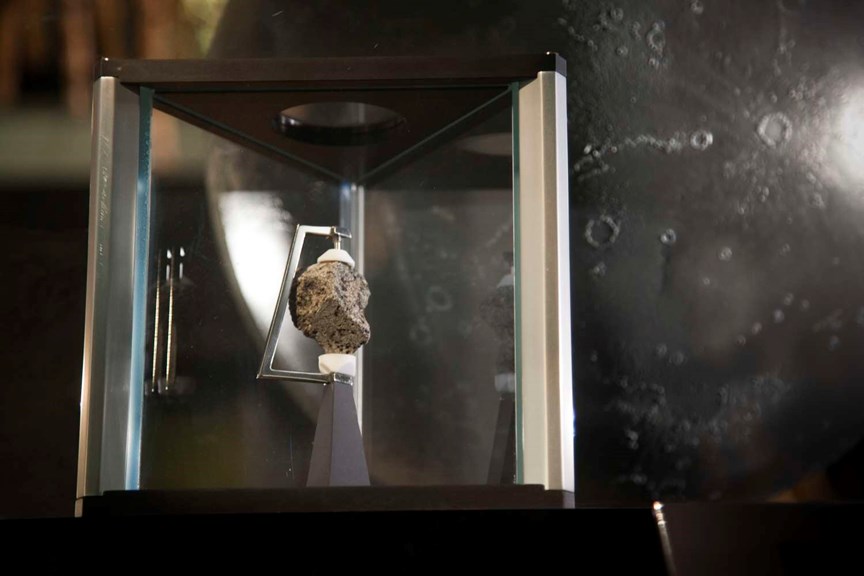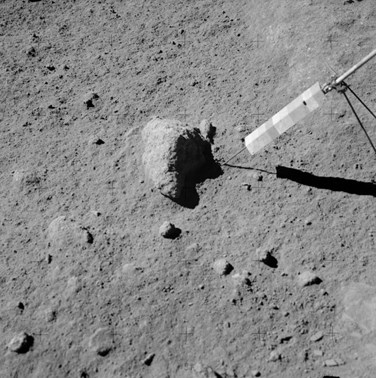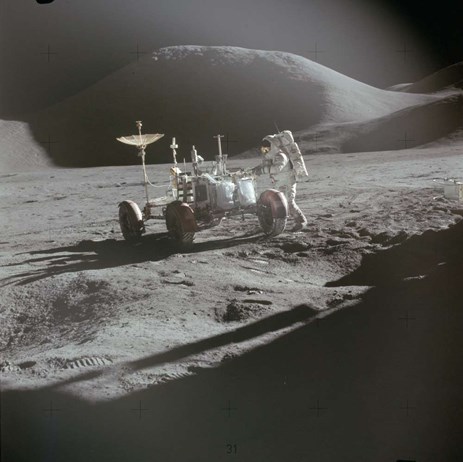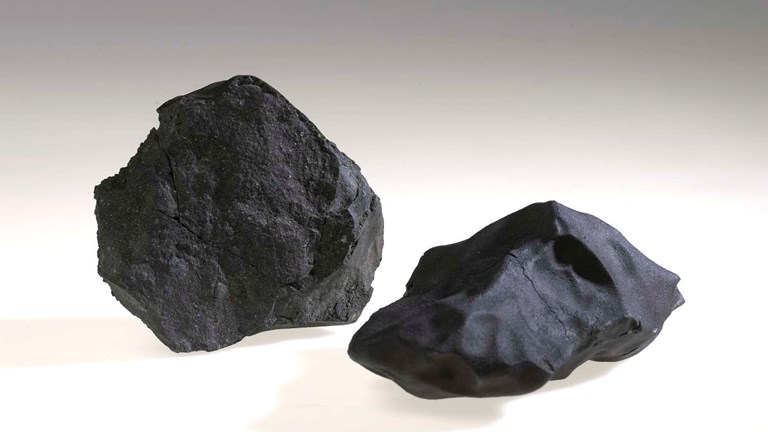Moon rock on display
Museums make it possible to see specimens from faraway places that you won't get the chance to visit yourself. And it doesn't get much further away than the Moon – a piece of which we've received on long-term loan from NASA for display in Melbourne Museum's Dynamic Earth.
It's a small piece cut from a larger rock, lunar rock 15555, dubbed 'The Great Scott' after Commander David Scott who collected it during the Apollo 15 Lunar Mission in July 1971. Its specially-built glass case is filled with nitrogen to protect the rock from Earth's atmosphere.
Moon rock is incredibly rare - we have not quite 800kg in total on Earth, which is lighter than an average family car. It's also incredibly important because of what it can tell us about the Moon's formation.
The Great Scott is a basalt formed from a volcanic eruption. It's similar to basalts found on Earth, being composed of silicate minerals such as olivine, pyroxene and plagioclase, except that basalts from the Moon lack water.
The Great Scott is 3.3 billion years old and has been sitting on the surface of the Moon for 80 million years, since long before the dinosaurs went extinct! We can tell this by measuring how long its minerals have been exposed to cosmic radiation. The rock still looks amazingly fresh because the Moon has no atmosphere, meaning very little weathering has occurred.
Apollo 15 was the fourth of the Apollo missions to land on the Moon and the first to involve significant geological training for the crew.
The landing site for Apollo 15, Mare Imbrium, was selected specifically to allow investigation of three different landscape features: a mare basin, a mountain front and a lunar rille. Mare Imbrium is so large that it's visible to the naked eye from Earth. It was hoped that Apollo 15 would be able to collect Pre-Imbrian material – rock exposed or thrown out by the impact that formed the enormous crater.
Another of the primary goals of the Apollo 15 mission was an examination of Hadley Rille, a channel-like depression in the lunar surface. During their three-day stay on the Moon, Scott and Irwin traversed over 28km in the lunar rover – the first time a vehicle had been driven on the Moon's surface.
At Hadley Rille they collected a large proportion of the rocks that were brought back to Earth, including Apollo 15555. Weighing 9.6kg on Earth, the rock weighed only 1.6kg on the Moon so it was easy to carry.
NASA distributed rock from the Apollo missions to researchers around the world for study, including Museum Victoria Honorary Associate Professor John Lovering. At the time of the Apollo program he was the Head of Earth Sciences at the University of Melbourne.
Professor Lovering carried out some of the very first chemical analyses of the Moon rock from Apollo 11 and 12, and discovered a new mineral, tranquillityite, which has since been found on Earth – from six localities in Pilbara, Western Australia – as well as from rocks from every Apollo mission and a lunar meteorite.













